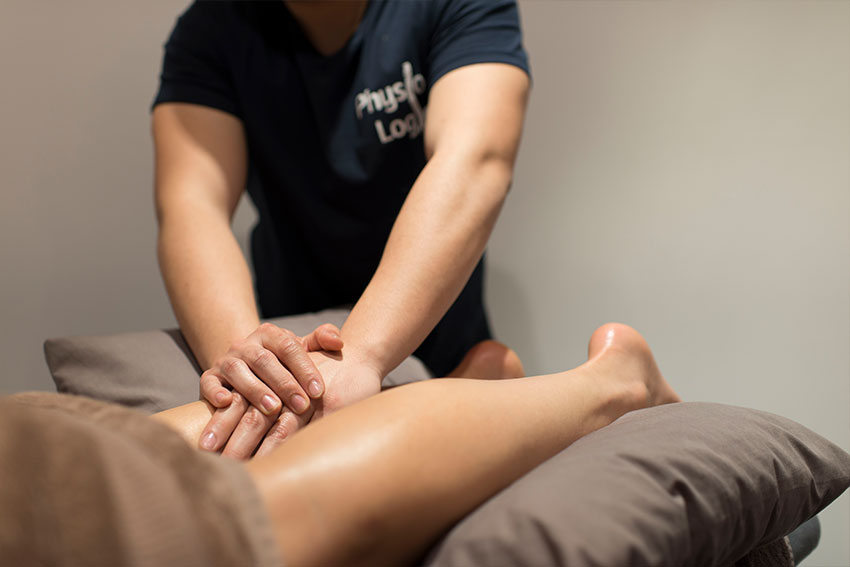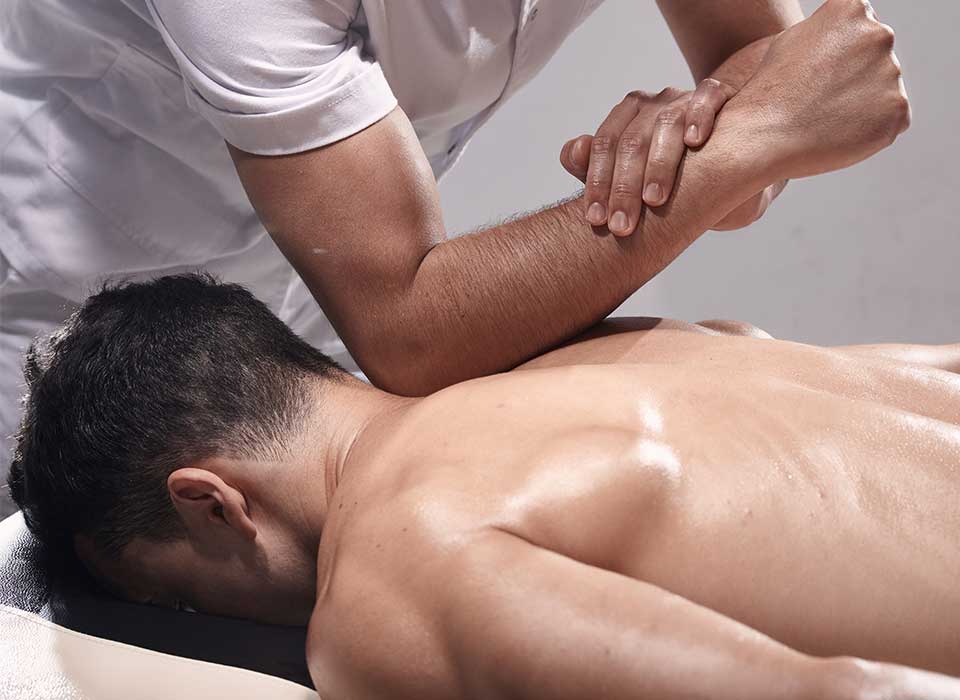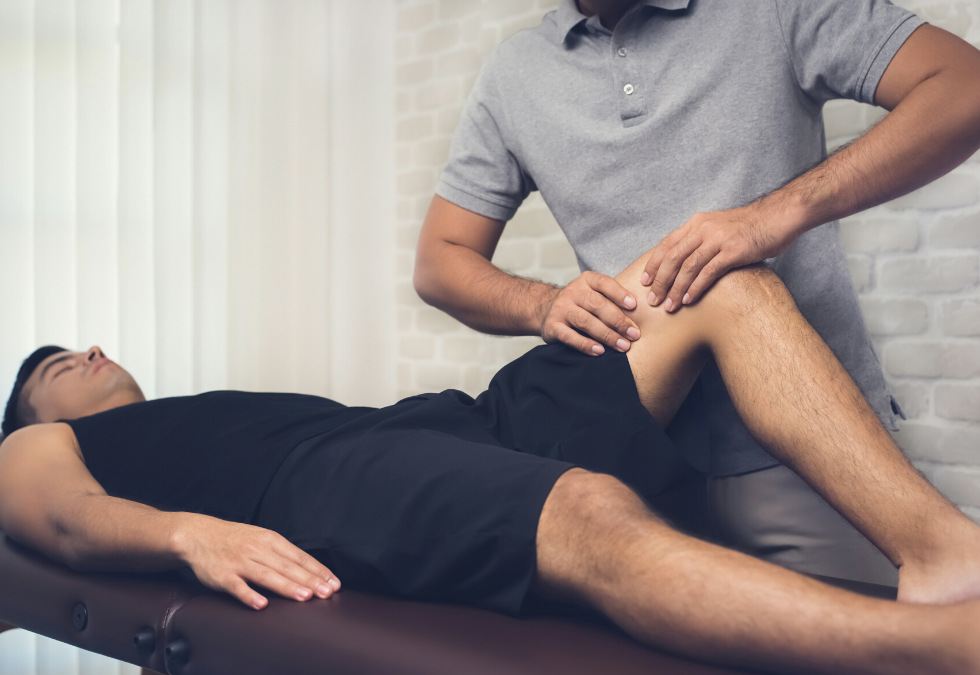Sports massage is a specialized form of massage therapy that focuses on the needs of athletes and individuals who participate in physical activity. It is designed to enhance athletic performance, prevent injuries, and aid in the recovery process. Sports massage therapists are trained to address muscle tension and imbalances in the soft tissues of the body, working specifically on the muscles, tendons, and ligaments that are most affected by physical exertion. By employing various techniques, such as deep tissue massage and passive stretching, sports massage helps to reduce muscle soreness, improve flexibility, and increase blood circulation to the muscles. Whether you are a professional athlete or an amateur enthusiast, sports massage can play a vital role in your training routine, helping you to optimize your performance and reduce the risk of injury.
Benefits of Sports Massage
Sports massage offers numerous benefits to athletes and individuals participating in physical activities. This specialized form of massage targets the soft tissues and muscles, focusing on enhancing athletic performance and preventing injuries.
One of the key benefits of sports massage is its positive impact on joint range of motion and flexibility. By applying specific techniques, sports massage therapists can help improve the mobility of joints, allowing athletes to move more freely during their activities.
Muscle tension and spasms can also be effectively addressed through sports massage. The manipulation of muscles helps to reduce tension and ease any existing spasms, promoting relaxation and facilitating better muscular function.
In addition to its physical benefits, sports massage has been shown to have positive effects on the neurological system. It helps regulate neurological excitability, which can aid in improving concentration, focus, and overall performance.
Sports massage has also been found to have psychological benefits. It can help alleviate anxiety and improve mood, leading to a sense of well-being. Furthermore, the relaxation induced by sports massage can enhance sleep quality, promoting better recovery.
While there is some limited research on the purported benefits of increased blood flow, elimination of exercise waste products, decreased chance of injury, and decreased recovery time, more studies are needed to provide conclusive evidence of these effects.
Types of Massages
There are various forms of massage that can be beneficial for athletes and individuals engaged in physical activity. Each type of massage offers unique techniques and focuses on different aspects of the body. One popular type is Swedish massage, which uses long, gliding strokes and kneading to promote relaxation and improve circulation. Deep tissue massage, on the other hand, targets deeper layers of muscle and connective tissue to address chronic tension and tightness. Sports massage, specifically tailored for athletes, combines elements of Swedish and deep tissue massage to enhance athletic performance, prevent injuries, and facilitate recovery. Other forms of massage include water-jet massage, which uses streams of water under high pressure to relax and massage the muscles, and passive recovery massage, which involves gentle stretching and manipulation of muscles to promote recovery and reduce muscle soreness. Regardless of the type, regular massage can contribute to overall well-being and aid in the management of muscle fatigue, tension, and injury prevention.

Swedish Massage
Swedish Massage is a highly effective technique that is often used in sports massage therapy. It helps in promoting muscle recovery, flexibility, and enhancing athletic performance. This form of massage involves the manipulation of soft tissues in the body to relieve muscle tension and promote relaxation.
During a Swedish Massage session, the therapist uses various strokes including effleurage, petrissage, tapotement, and friction. Effleurage strokes involve long, sweeping motions that help to warm up the muscles and increase blood flow. Petrissage involves kneading and squeezing the muscles, which helps to release muscle knots and increase flexibility. Tapotement is a rhythmic tapping motion that helps to invigorate the muscles. Friction strokes are deep, circular motions used to target specific areas of tension.
The positive effects of Swedish Massage on muscle recovery are immense. It helps to increase blood circulation, which brings essential nutrients and oxygen to the muscles, aiding in faster healing and reducing recovery time. This technique also helps to relieve muscle soreness by reducing inflammation and improving lymphatic drainage. Moreover, it enhances flexibility by stretching and lengthening the muscles, improving range of motion.
Swedish Massage also plays a vital role in preventing sports-related injuries. By reducing muscle tension, it helps to decrease the risk of injury during physical activity. The relaxing effects of this massage technique also promote mental and physical well-being, which is important for maintaining a healthy body and avoiding burnout. Overall, Swedish Massage is an excellent form of sports massage therapy that offers numerous benefits for athletes, including improved muscle recovery, enhanced flexibility, and injury prevention.
Deep Tissue Massage
Deep tissue massage is a therapeutic technique that focuses on the deeper layers of muscle and connective tissue. Unlike sports massage, which primarily targets muscles used in athletic activities, deep tissue massage is designed to alleviate chronic pain and muscle tension.
One key difference between deep tissue massage and sports massage is the amount of pressure applied. Deep tissue massage uses firm, sustained pressure to reach the deeper layers of muscle and tissue. This can be effective in relieving specific sites of pain, such as the neck or lower back. By targeting these areas, deep tissue massage can help improve mobility and reduce discomfort.
Similar to sports massage, deep tissue massage incorporates several techniques to achieve its therapeutic effects. These techniques include effleurage, which involves long, gliding strokes to warm up the muscles; petrissage, which involves kneading and squeezing to release muscle knots and tension; and friction massage, which applies deep, circular motions to break down adhesions and scar tissue.
Deep tissue massage also offers specific benefits for pain management during labor and delivery. By targeting areas of tension and pain, it can help alleviate discomfort and promote relaxation. Additionally, deep tissue massage can increase blood flow, release endorphins, and reduce stress hormones, all of which can contribute to a more positive birth experience.
Myofascial Release
Myofascial Release is a specialized technique used in sports massage therapy to address muscle tension and improve athletic performance. This technique focuses on releasing the fascia, which is a thin layer of connective tissue that surrounds and supports the muscles. By targeting the fascia, Myofascial Release aims to eliminate restrictions and restore optimal mobility.
The main technique used in Myofascial Release is sustained pressure applied to specific points of tension in the muscles and fascia. This pressure allows the tight and restricted tissues to release, improving overall flexibility and reducing muscle stiffness. Additionally, Myofascial Release may incorporate stretching and gentle manipulation to further enhance the release of tension.
The benefits of Myofascial Release in sports massage therapy are numerous. Firstly, it can prevent and alleviate muscle imbalances, which often occur due to repetitive motion or intense training. By addressing these imbalances, athletes can optimize their performance and minimize the risk of injury.
Furthermore, Myofascial Release can improve blood circulation and nutrient supply to the muscles, enhancing their recovery and reducing post-exercise soreness. It can also improve joint range of motion, allowing athletes to move more freely and improve their athletic abilities.
Trigger Point Therapy
Trigger Point Therapy is a highly effective technique used to relieve muscle pain and tension. It focuses on identifying and releasing trigger points, which are specific areas of muscle tightness that can cause pain and discomfort. This therapy involves applying pressure and sustained pressure to these trigger points to alleviate pain and release tension in the affected muscles.
Trigger points are often caused by stress, overuse, or injuries and can lead to muscle pain, tightness, and restricted range of motion. By targeting these trigger points, Trigger Point Therapy helps to release the tension and restore proper muscle function. This therapy can be performed by a massage therapist or through self-treatment techniques such as the use of foam rollers or specific stretching exercises.
Different techniques and methods are used in Trigger Point Therapy to effectively release muscle tension and alleviate pain. These include direct pressure, deep tissue massage, stretching, and heat or cold therapy. The targeted application of these techniques helps to break down muscle knots, improve blood circulation, and enhance overall muscle flexibility.
Overall, Trigger Point Therapy is a valuable approach in relieving muscle pain and tension. Whether performed by a qualified therapist or through self-treatment methods, it provides an effective way to address trigger points and restore optimal muscle function. By incorporating Trigger Point Therapy into a regular routine, individuals can experience significant relief from muscle pain and tightness, allowing them to enjoy improved mobility and overall well-being.
Forms of Sports Massage
Sports massage is a specialized form of massage therapy that focuses on the needs of athletes, whether they are professional or amateur. It is designed to enhance athletic performance, prevent injuries, and promote faster recovery. There are various forms of sports massage available, each with its own unique techniques and benefits. One common form is deep tissue massage, which targets the deeper layers of muscles and connective tissues to alleviate muscle tension and improve flexibility. Another form is Swedish massage, which uses long, flowing strokes to promote relaxation and reduce muscle soreness. Other forms include trigger point therapy, myofascial release, and passive recovery massage. Each form of sports massage is tailored to address specific issues and goals, providing athletes with a comprehensive approach to optimizing their physical well-being. Whether it’s targeting muscle soreness, improving flexibility, or preventing injuries, sports massage offers a range of techniques to suit the individual needs of athletes.

Pre-Event Massage
Pre-Event Massage is a specialized form of sports massage that is designed to help athletes prepare for their upcoming physical activities. This type of massage is typically performed before a sporting event or intense workout to enhance athletic performance and reduce the risk of injury.
The primary purpose of a pre-event massage is to increase circulation, loosen muscles, and improve flexibility. By promoting blood flow, this type of massage helps to warm up the muscles and prepare them for the demands of physical activity. Loosening the muscles can also help to alleviate any tightness or tension that may hinder performance.
During a pre-event massage, various techniques are used to target specific areas of the body. These techniques may include effleurage (long, sweeping strokes), petrissage (kneading and squeezing of the muscles), and tapotement (rhythmic tapping). Additionally, specific massage protocols may be employed to address common areas of tension or tightness in athletes.
By incorporating pre-event massage into their routine, athletes can experience numerous benefits. These include increased range of motion, improved muscle flexibility, enhanced muscular performance, and a reduced chance of muscle fatigue or injury. Overall, pre-event massage is an essential component of an athlete’s preparation for physical activities, ensuring they perform at their best and recover effectively.
Post-Event Massage
In addition to the benefits of pre-event massages, post-event massages play a crucial role in an athlete’s recovery process. These massages are essential for reducing delayed-onset muscle soreness (DOMS) and promoting faster recovery after intense workouts or sports events.
DOMS, characterized by muscle soreness and stiffness experienced 24 to 72 hours after physical exertion, can significantly impact an athlete’s performance. However, post-event massages can help mitigate this discomfort by increasing blood flow to the muscles, aiding in the removal of metabolic waste, and reducing inflammation. By alleviating muscle soreness, athletes can bounce back quicker and focus on their next training session or competition.
To optimize recovery, post-event massages employ techniques such as effleurage, petrissage, and tapotement to release tension, break up adhesions, and enhance muscular flexibility. These targeted treatments help athletes recover more rapidly, allowing them to return to peak performance with minimal downtime.
For athletes, regular post-event massages are not only an effective means of recovering from intense workouts but also a vital aspect of injury prevention. By addressing any muscular imbalances or tightness that may lead to chronic injuries, these massages contribute to overall physical well-being and longevity in athletic careers.
Maintenance/Restorative Treatment
Maintenance/restorative treatment in sports massage plays a crucial role in helping athletes prevent injuries, recover from injuries, reduce pain, and improve endurance. This treatment focuses on restoring the body to its optimal condition after intense physical activity, allowing athletes to perform at their best.
One of the key benefits of maintenance/restorative treatment is injury prevention. Regular sports massages help identify and address any muscular imbalances, tightness, or restrictions that may lead to injuries. By targeting these issues, athletes can correct imbalances, improve muscle flexibility, and reduce the risk of strains, sprains, and other sports-related injuries.
Furthermore, this treatment aids in the recovery process by reducing pain and fatigue. Techniques such as myofascial release and trigger point therapy are often utilized in sports massage to release tension, break up adhesions, and decrease muscle soreness. By targeting specific areas of the body, these techniques promote faster recovery, allowing athletes to alleviate pain and fatigue associated with intense workouts or competitions.
In addition to injury prevention and faster recovery, maintenance/restorative treatment improves endurance. By addressing muscular imbalances and restrictions, athletes can achieve better biomechanical alignment and improved muscle function. This, in turn, enhances their overall endurance, allowing them to perform at high levels for longer durations.
Injury Prevention & Onset Muscle Soreness Relief
Sports massage plays a crucial role in injury prevention and onset muscle soreness relief. One of the main benefits of sports massage is its ability to break up lactic acid and toxins that accumulate in the muscles during intense physical activity. By targeting these waste products, sports massage helps reduce muscle soreness after workouts or competitions.
In addition to relieving muscle soreness, sports massage also addresses muscle fatigue. However, the effects of sports massage on muscle fatigue and delayed onset muscle soreness can vary from person to person. Some studies have shown positive results, indicating that sports massage can help decrease muscle fatigue and reduce the risk of injury. However, other studies have found inconsistent results, suggesting that the effects of sports massage on muscle fatigue may vary depending on individual factors.
Nevertheless, the potential benefits of sports massage in injury prevention and onset muscle soreness relief cannot be overlooked. By breaking up lactic acid and toxins, sports massage can help alleviate muscle soreness and promote faster recovery. Additionally, by addressing muscle fatigue, sports massage may contribute to reducing the risk of injuries caused by overworked muscles.
Professional Athletes vs Amateur Athletes
When it comes to sports massage, the needs and benefits can vary between professional athletes and amateur athletes. The level of competition and training intensity for each group may influence the use and effectiveness of sports massage.
Professional athletes, often engaged in high-level competition, rely heavily on their physical performance. For them, sports massage can be an essential aspect of their training and recovery routines. The intense training schedules and demanding competitions can lead to higher levels of muscle tension and increased risk of injury. Sports massage can help professional athletes in multiple ways, including reducing muscle fatigue, preventing injuries, and enhancing athletic performance. Their access to regular massage sessions and experienced therapists also allows for more focused and customized treatment plans.
Amateur athletes, on the other hand, may not have the same level of competition or training intensity as professionals. However, they still engage in physical activities and can experience muscle soreness or fatigue. Sports massage can be beneficial for amateur athletes, but the frequency and intensity may differ. While professional athletes might require regular and more intensive sessions due to their training demands, amateur athletes might benefit from occasional sports massage sessions to alleviate muscle tension and aid in recovery after intense workouts or competitions.
It is important to note that both groups should consult with a massage therapist who understands the unique considerations of their respective athletic pursuits. Factors such as previous injuries, specific training techniques, and individual goals should all be considered when designing a sports massage program for either professionals or amateurs.
Conclusion
In conclusion, sports massage is an effective tool for athletes, regardless of their level of competition. Professional athletes engaged in high-level competition may benefit from more frequent and intense sessions to reduce muscle fatigue and prevent injury. Amateur athletes, meanwhile, can still benefit from occasional sports massage sessions to alleviate muscle tension and aid in recovery after workouts or competitions.




